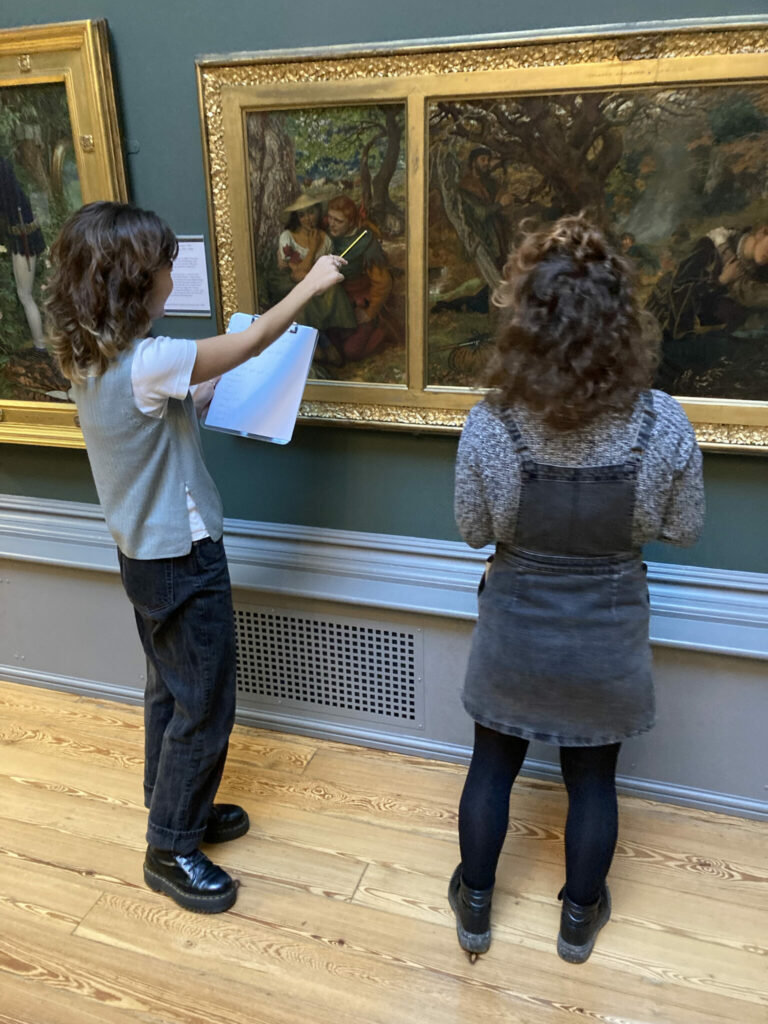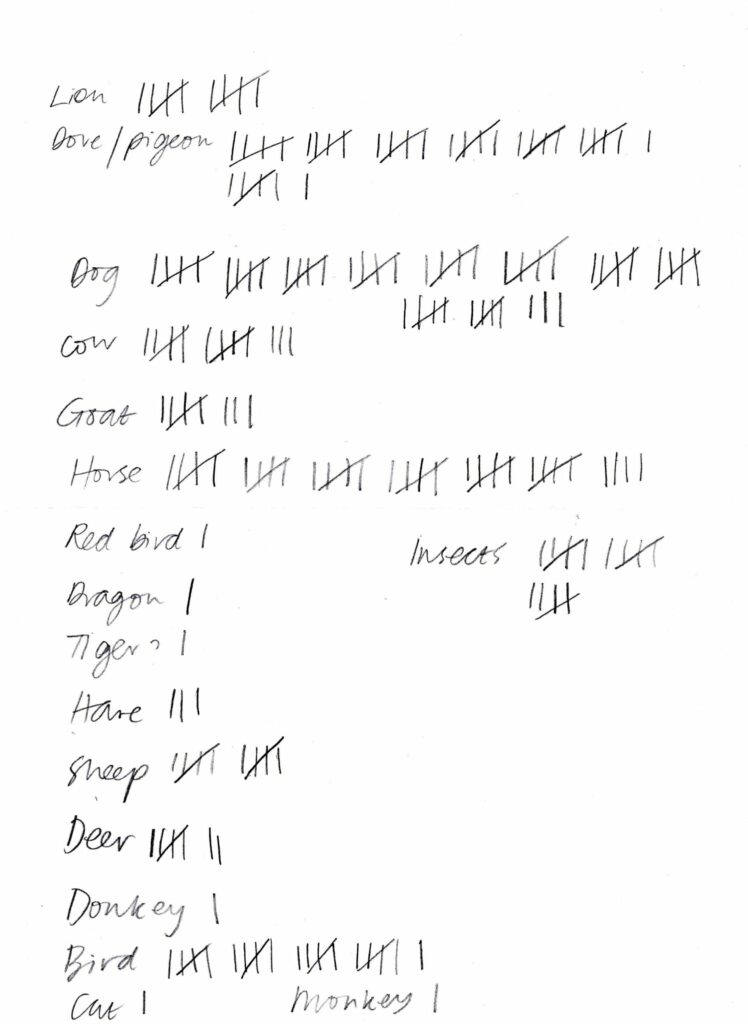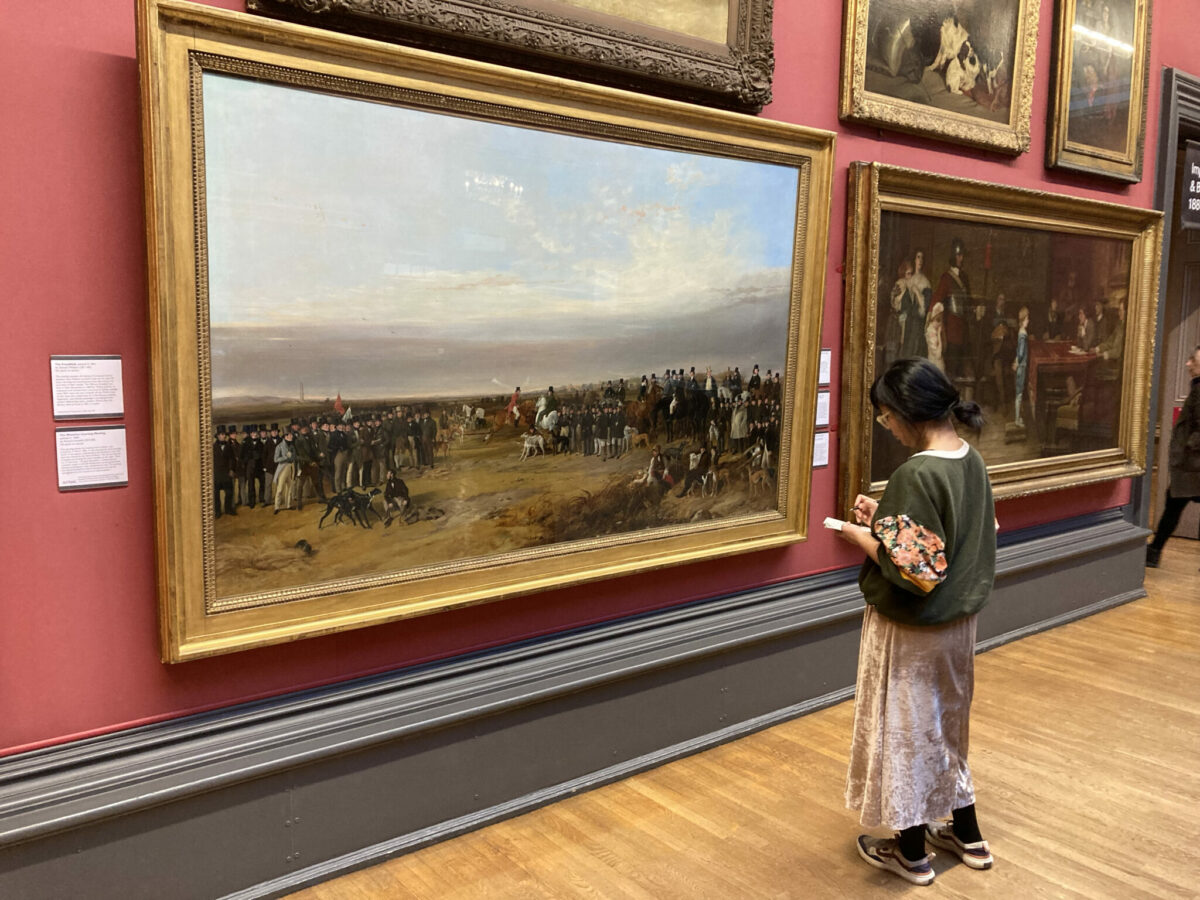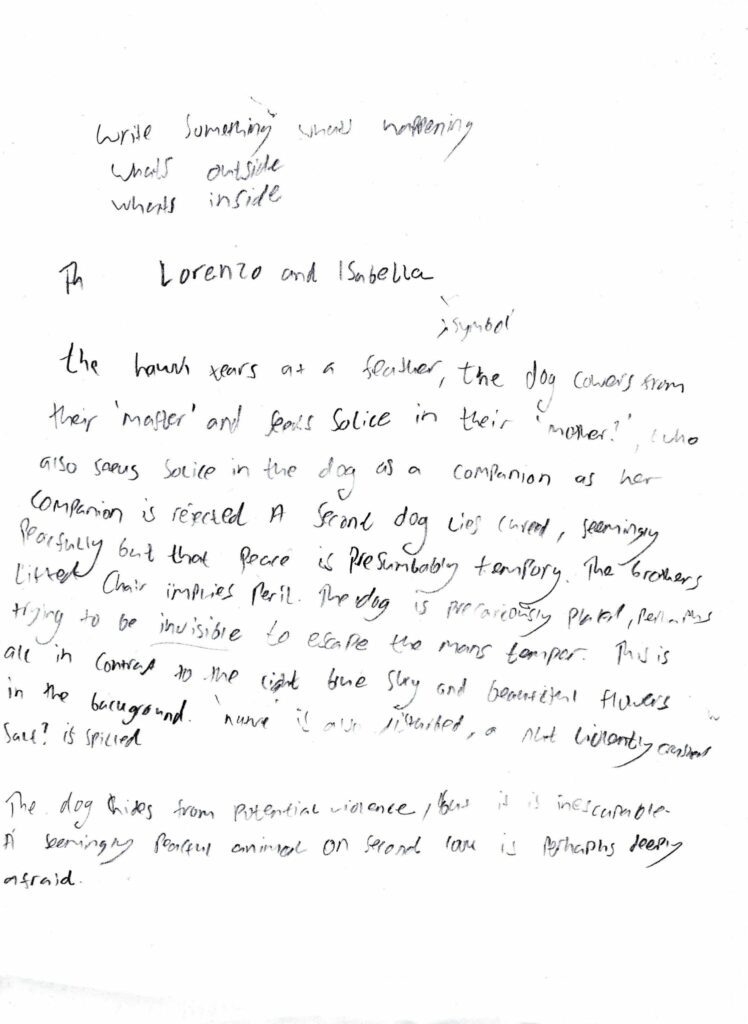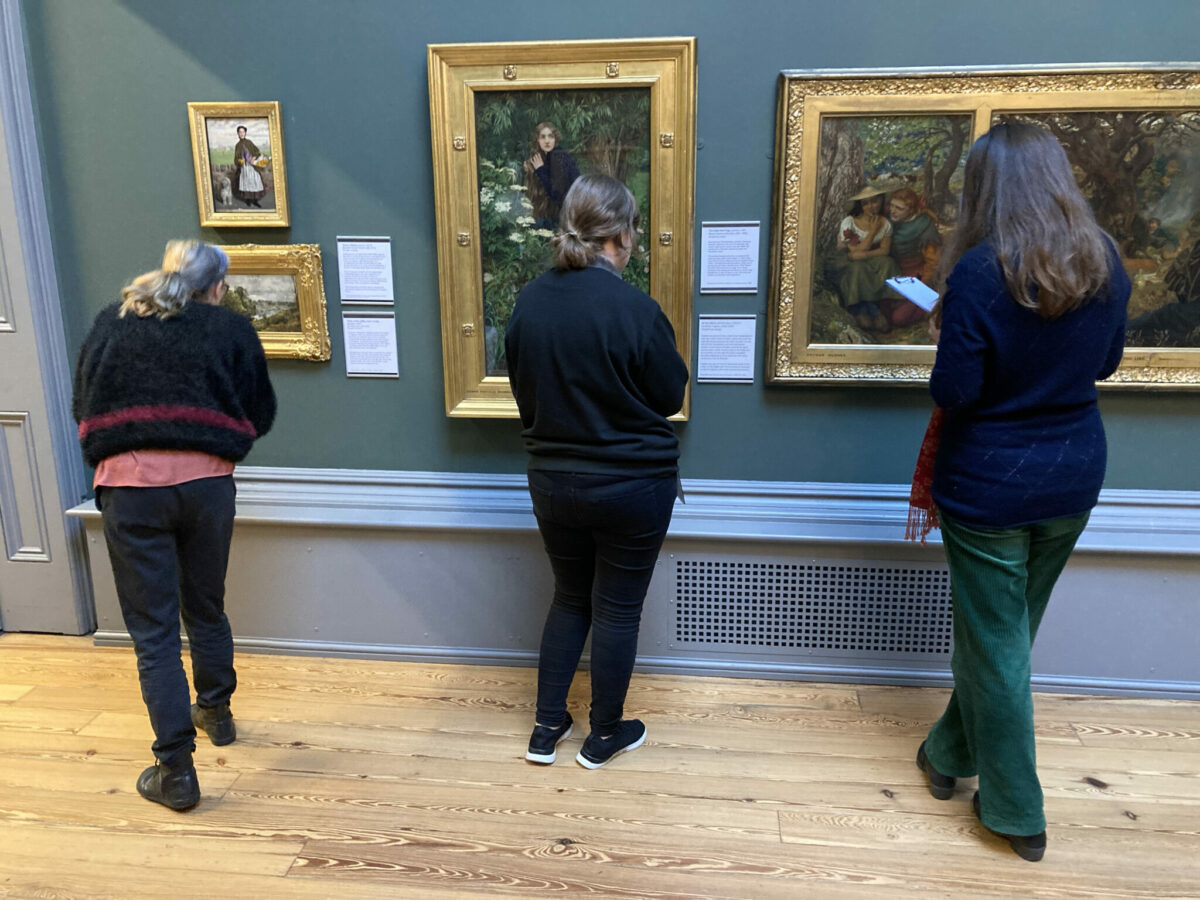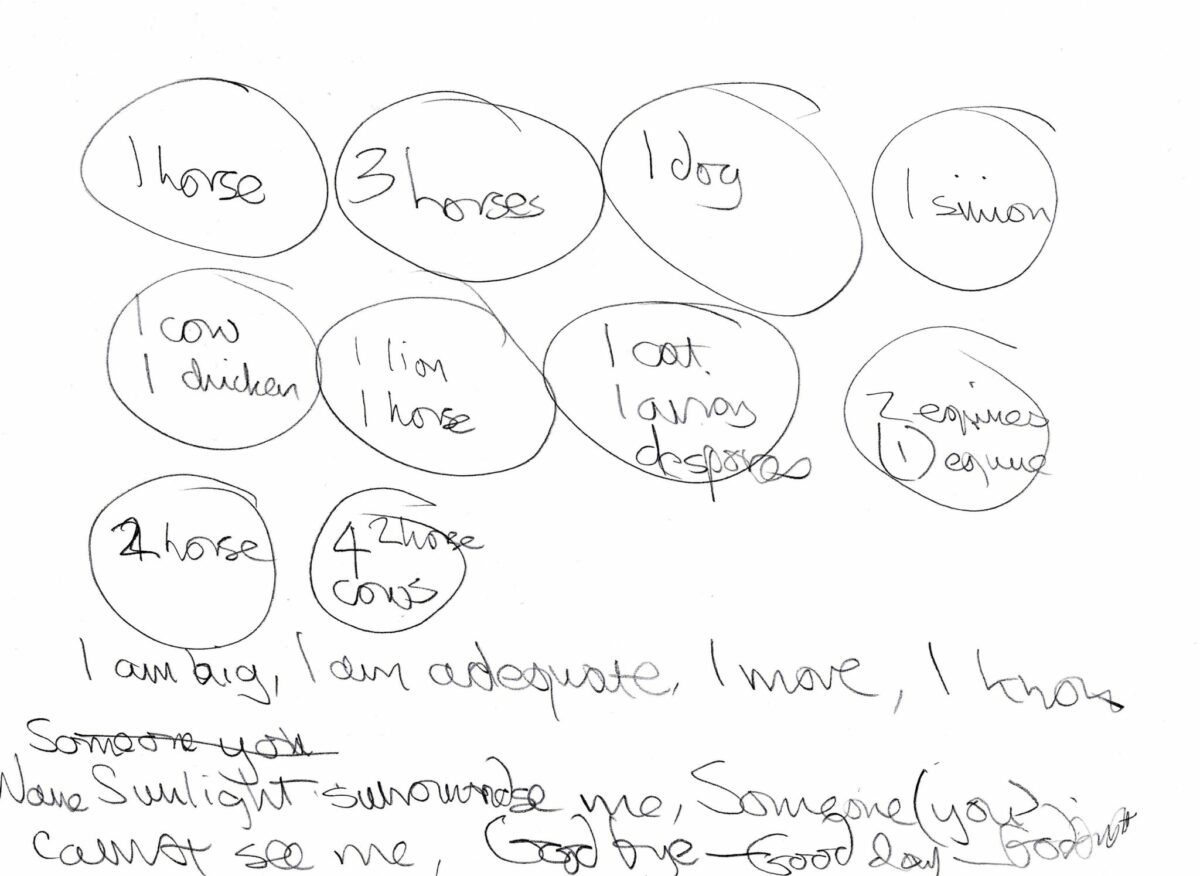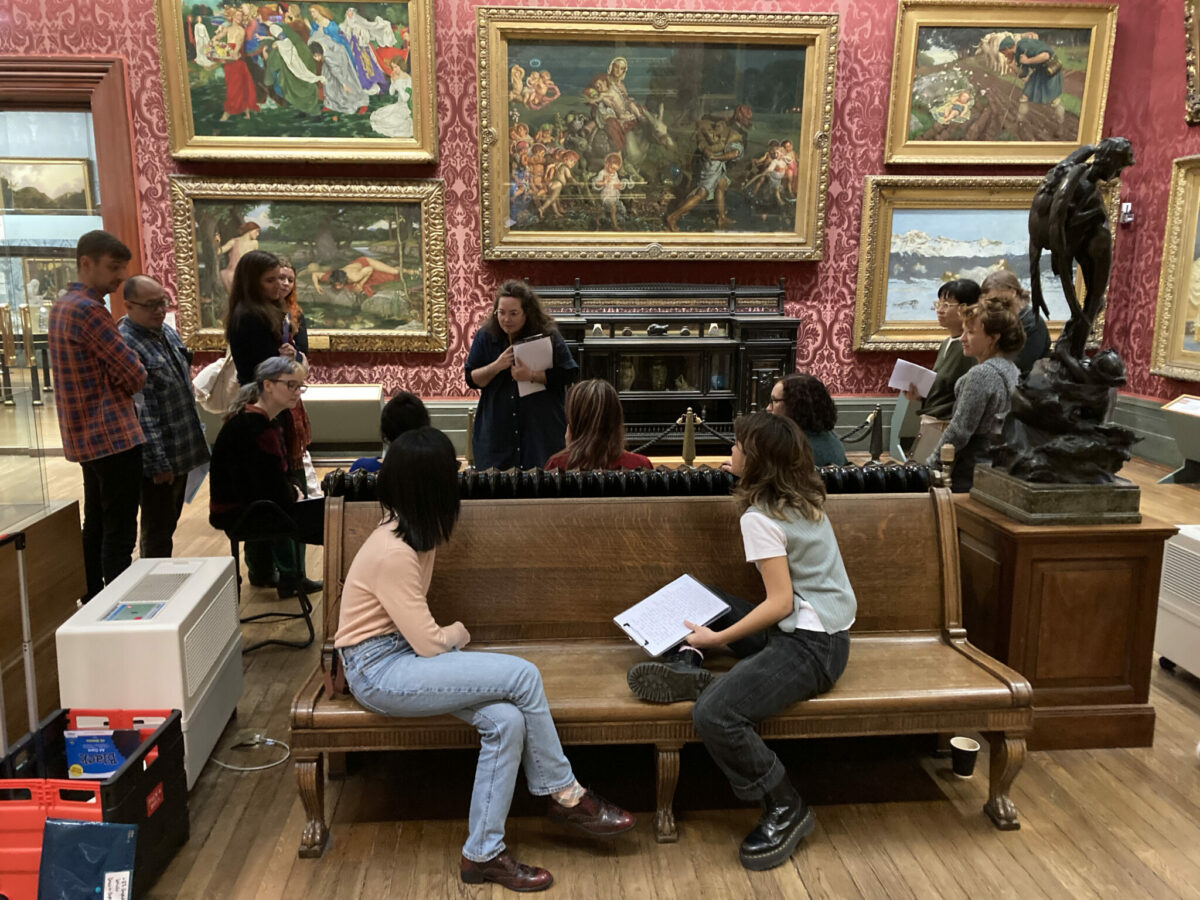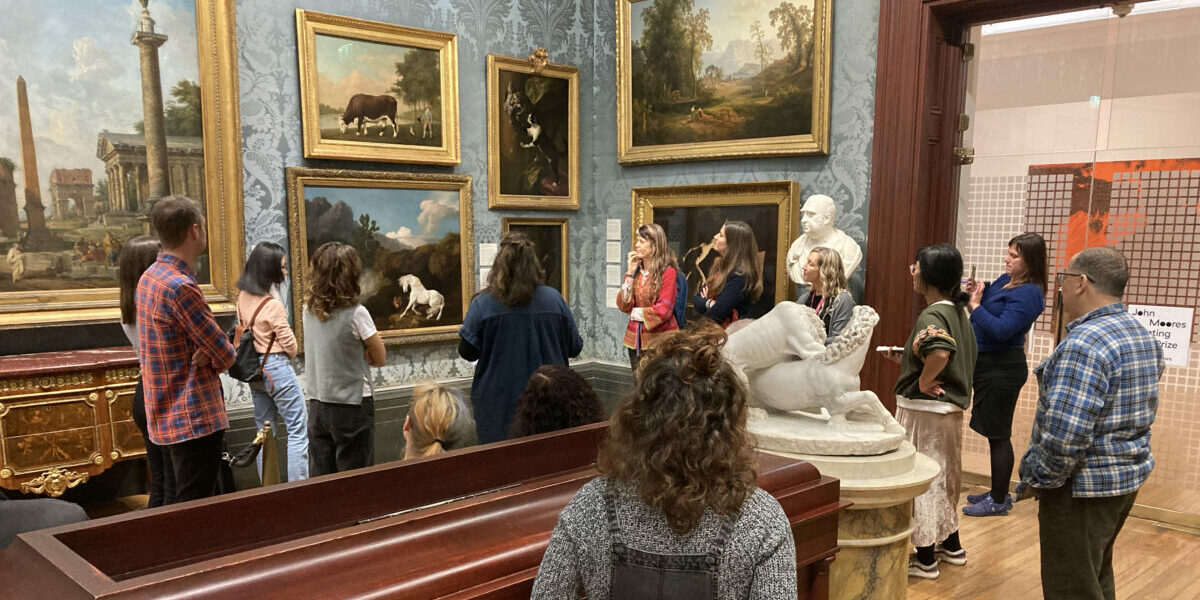Multispecies Disharmony in the Landscapes of the Walker Art Gallery is a text based artwork written to be performed as a guided tour. It was commissioned for the Animals and Landscapes Symposium organized by Edge Hill University and the Centre for Human Animal Studies in partnership with the Walker Art Gallery.
The guided tour and text based artwork of the performance Multispecies Disharmony in the Landscapes of the Walker Art Gallery evolves around the imagined experiences of the non-human animals inhabiting seven paintings on display at the Walker Art Gallery. It brings forward their experiences of art production as well as the landscapes of the paintings they inhabit. The work centers on a less anthropocentric version of art history while using anthropomorphism and empathy as methods to imagine these new experiences.
What is it like to be part of the history of art and its production system of oppression and violence? How does the landscapes of humans affect the non-human animals that inhabit them? What happens if we refuse to read the abstract and once living symbolically, and instead recognise their agency?
The event was funded by the UKRI-AHRC Landscape Decision programme as part of the Multispecies Storytelling Network and the travel costs by Konstnärsnämnden.
Multispecies Disharmony in the Landscapes of the Walker Art Gallery was performed and led by EvaMarie Lindahl November 18, 2022
These are the seven paintings that the work is based on:
Dante and Beatrice 1883 by Henry Holiday
Venus and Anchises 1889–1890 by William Blake Richmond
The Waterloo Coursing Meeting 1840 by Richard Ansdell
Harmony in Green 1997 by Dan Hays
Escaped 1865 by Joseph Edward Worrall
Cow Mutations 1986 by Tim Head
The Lincolnshire Ox 1790 by Georg Stubbs

Below follows a couple of images documenting the tour and workshop at the Walker Art Gallery as well as excerpts from the text based art work.
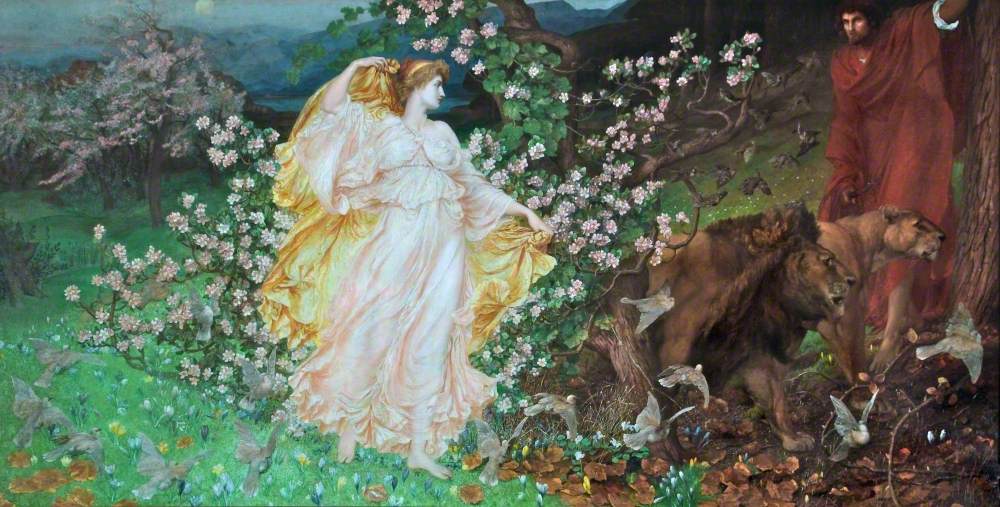
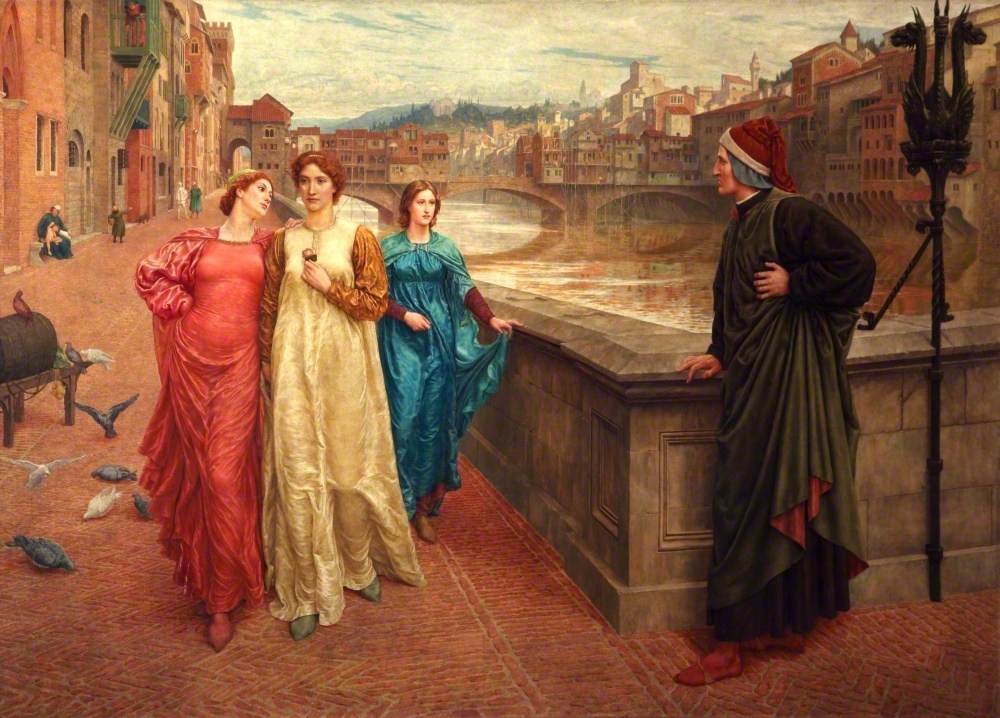
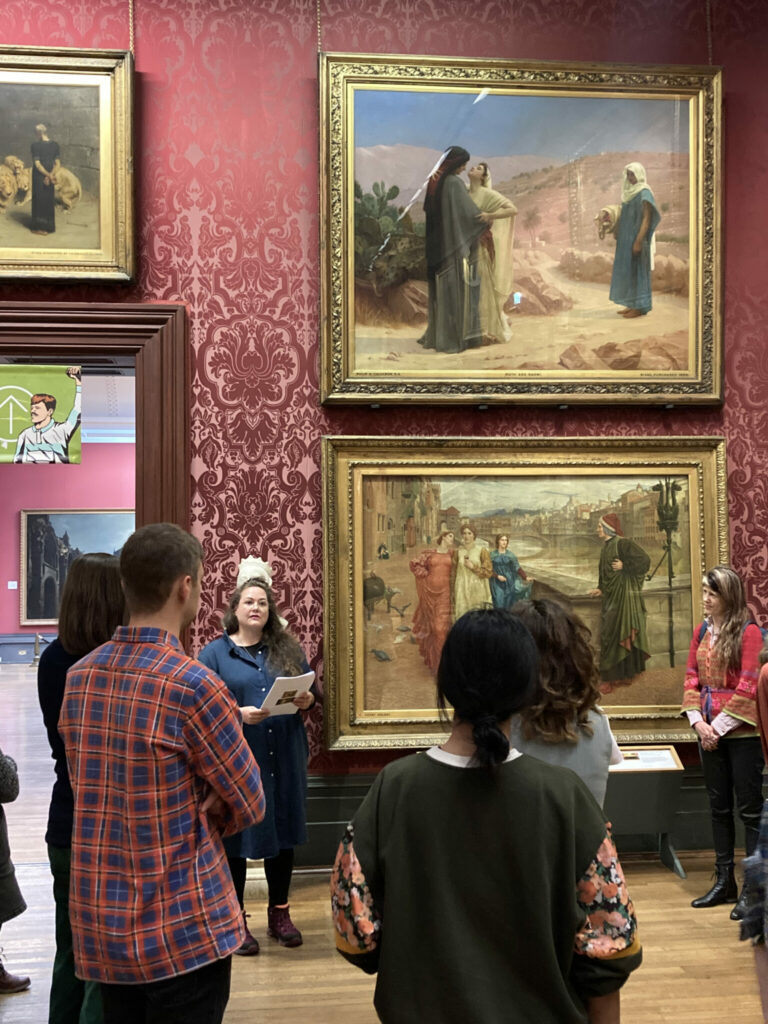
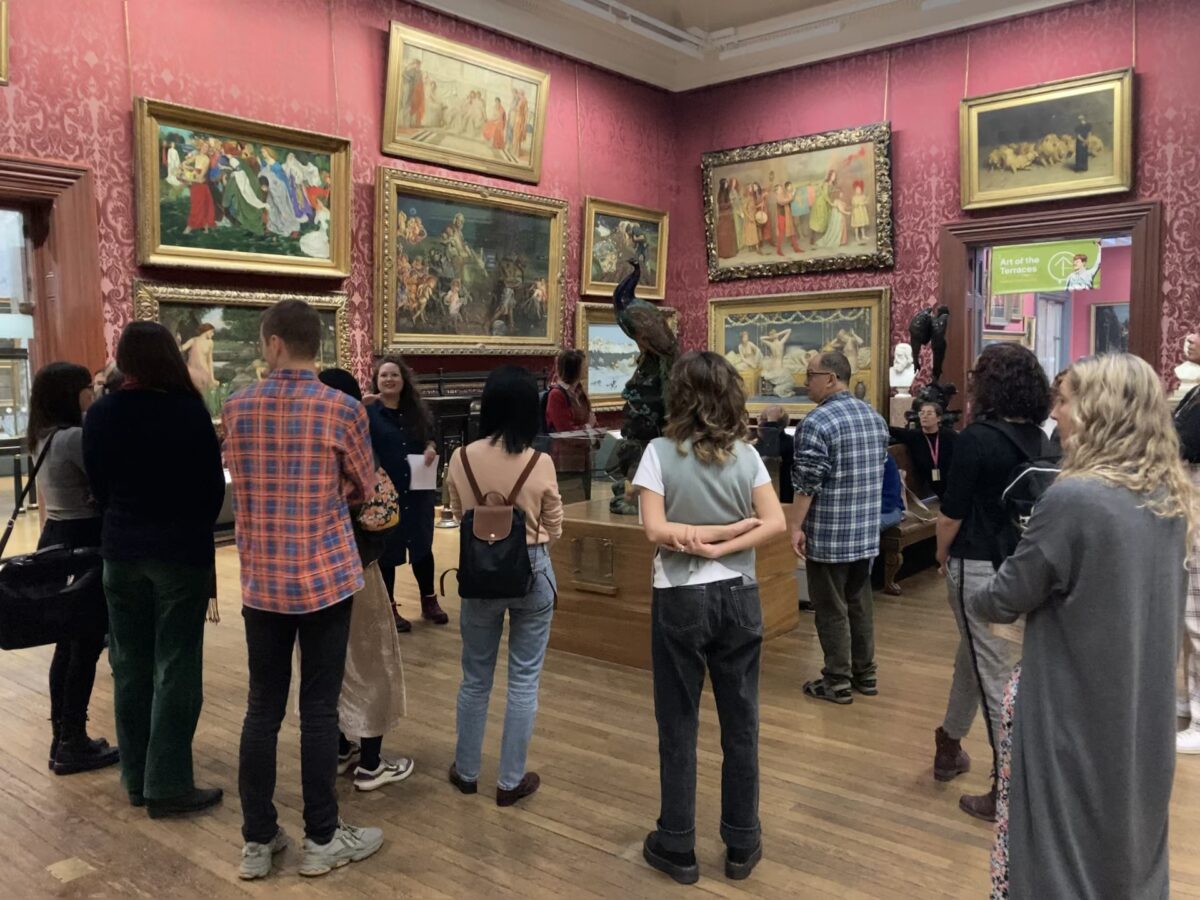
The Corner of the Doves
_
LIVERPOOL, UK
WALKER ART GALLERY
FIRST FLOOR, ROOM 8
_
The Artist is standing with her back against one of the corners of room 8 in the Walker Art Gallery. To the left of her the painting Venus and Anchises by William Blake Richmond is installed and to the right Dante and Beatrice by Henry Holiday is on display. The Audience is turned towards the Artist, some sitting on wooden benches, some standing. The artist has just turned the Audience attention to the doves in the two paintings.
THE ARTIST READS
Welcome to the corner of the doves. We are inhabiting your art history in millions, and we are seldom put in detail, making us part of the background, here to set the scene. We are lucky, for not only do we inhabit your art history in millions we also live wherever you live. Because artists seem not to be interested in us as individuals, we are not killed as subjects to study. The artist is not someone we fear. It is not our feathers that become visual keys in your artworks. It is not our feathers that is turned into tools. It is not our skin that is turned into glue, and it is not our bones that have been burnt and crushed into pigment. It is not the fats of us that are used in creating …
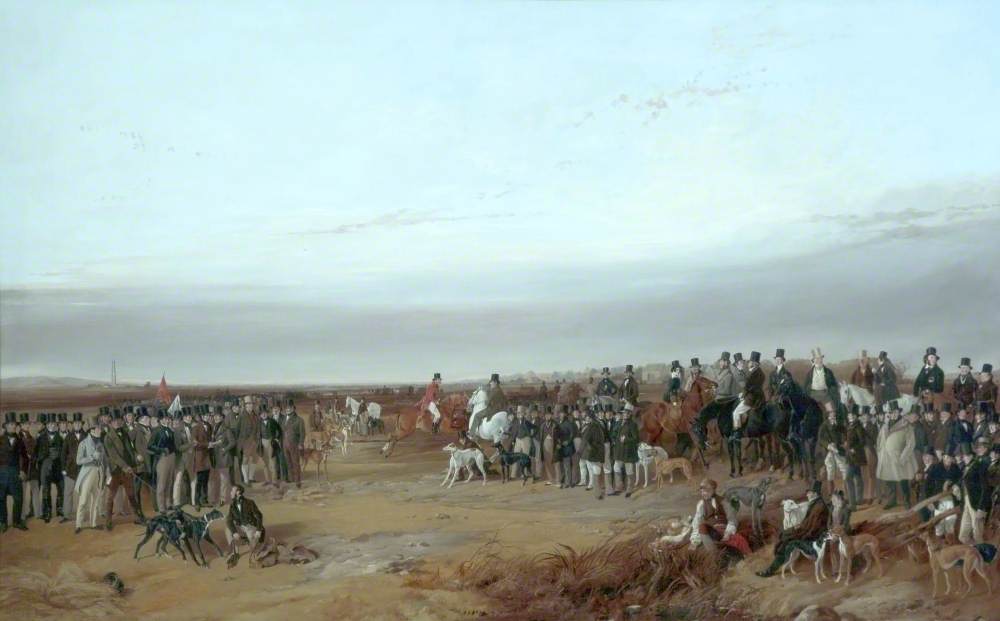
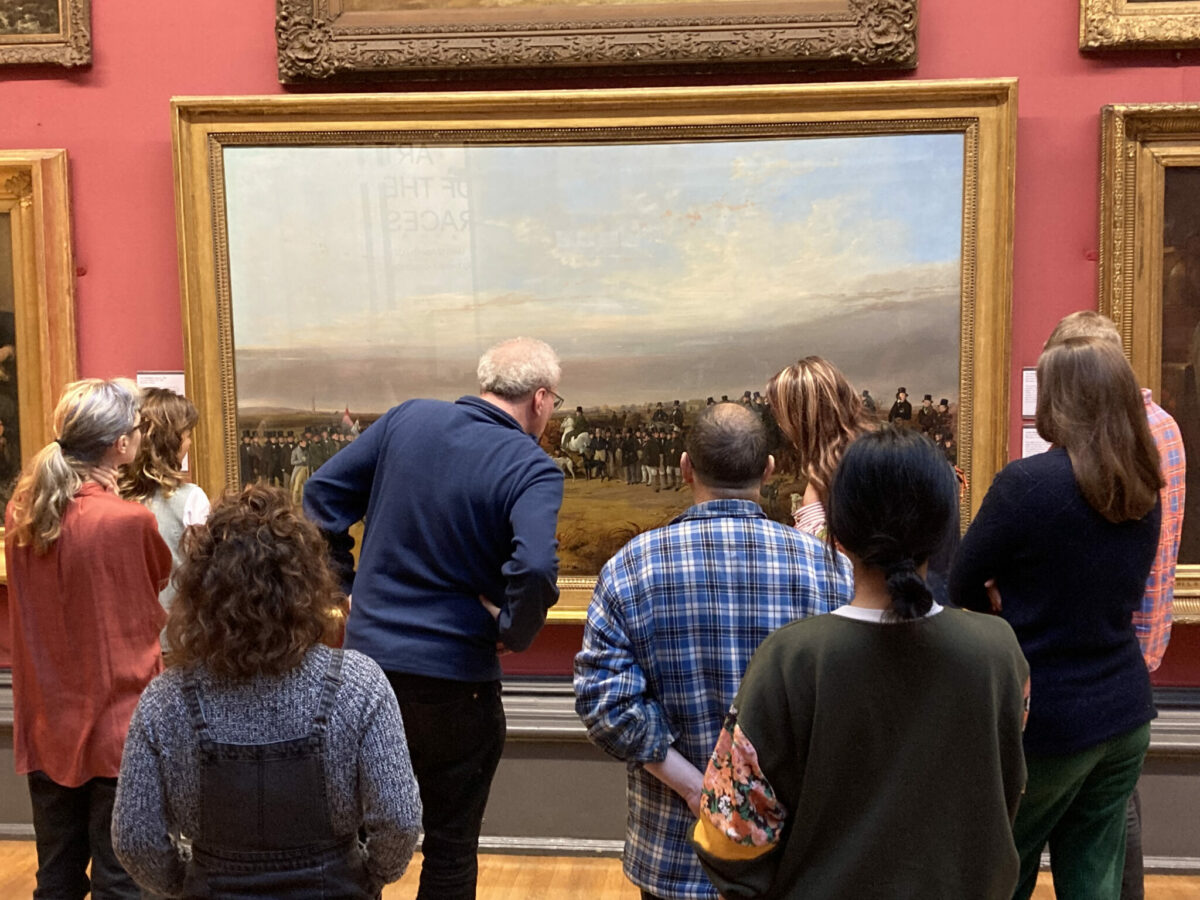
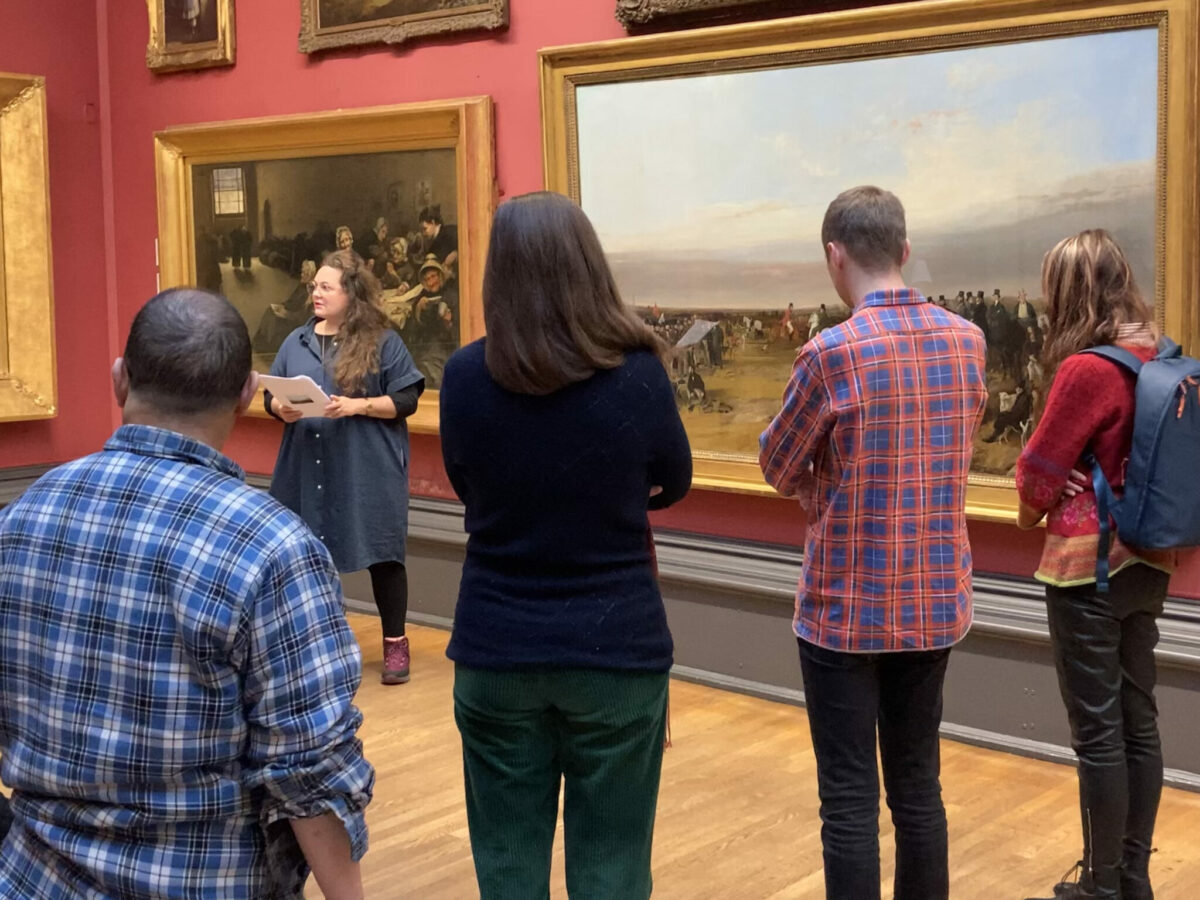
The Cause of the Dead Hares
_
LIVERPOOL, UK
WALKER ART GALLERY
FIRST FLOOR, ROOM 7
_
The Artist is standing beside the painting The Waterloo Coursing Meeting by Richard Ansdell. Infront of here the Audience is standing and sitting in a semi-circle facing the painting.
THE ARTIST READS
This painting is said to contain 73 portraits. But it is only the humans that are counted within those numbers. What is a portrait? A portrait is made of an individual, therefore not granted us since we are not viewed as such. Individuals. Here on these plains, we are tools. But we are here nevertheless, 21 of my kind, strokes that represents our different and individual fur, colors and personalities. Our temperaments seen in our body language, our personal traits painted.
We are catching our prey by speed, running by sight, but not by scent.
Who am I? I am the one coloured white between a man in a grey hat and a group of horses, my head turned. I am not in the center …
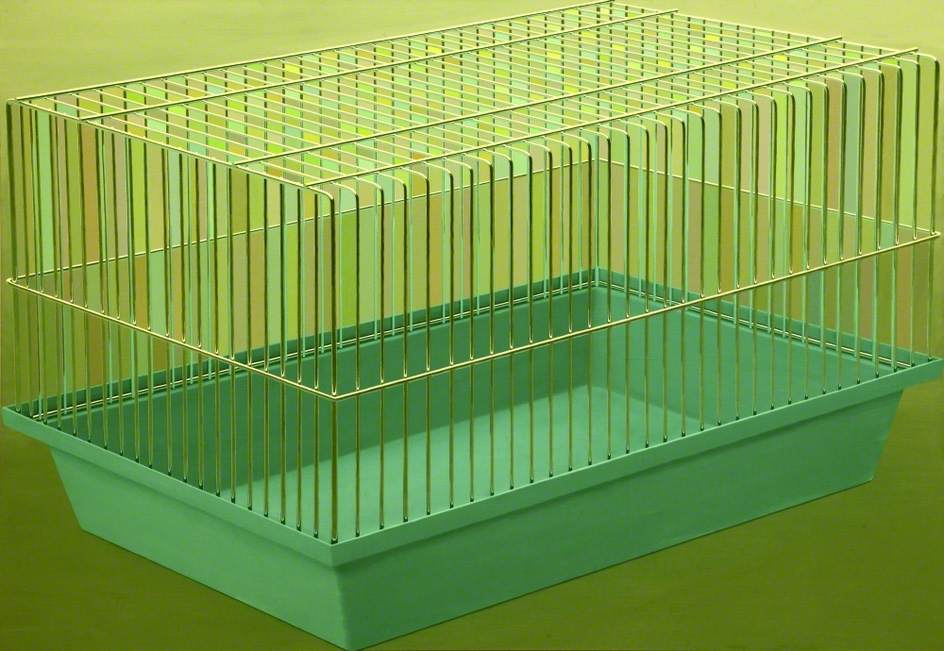
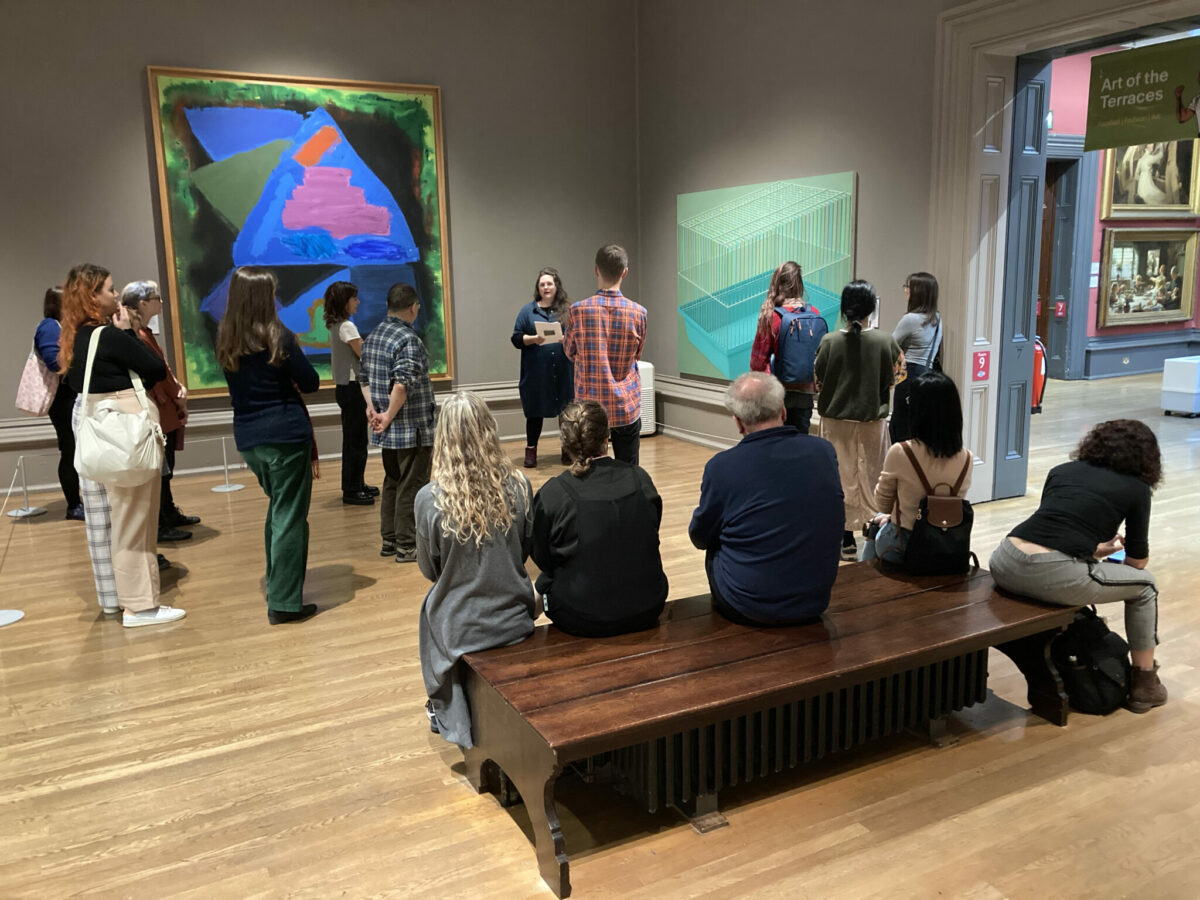
Disharmony in Green
_
LIVERPOOL, UK
WALKER ART GALLERY
FIRST FLOOR, ROOM 9
_
The Audience is sitting and standing to the left of the Artist. The painting Harmony in Green by Dan Hays is hanging in the corner where the artist has positioned herself. The painting reflects the light of the room giving the corner a green glow.
THE ARTIST READS
You are standing in front of a painting that depicts me. You can’t see me, because I am not here but me and my kind are so deeply connected with this cage that it in fact becomes a portrait of me.
The artist painted this cage in the same size as his body, meaning the cage is as tall as himself. I chew the cold metal and grip the grid with all four feet while climbing. I try to chew through that which is unchewable, cold metal, over and over again.
It seems like not many of my kin has ever been portrayed by humans. I must say that the fact that we seem to mundande to portray makes me relieved. The curiosities of artists …
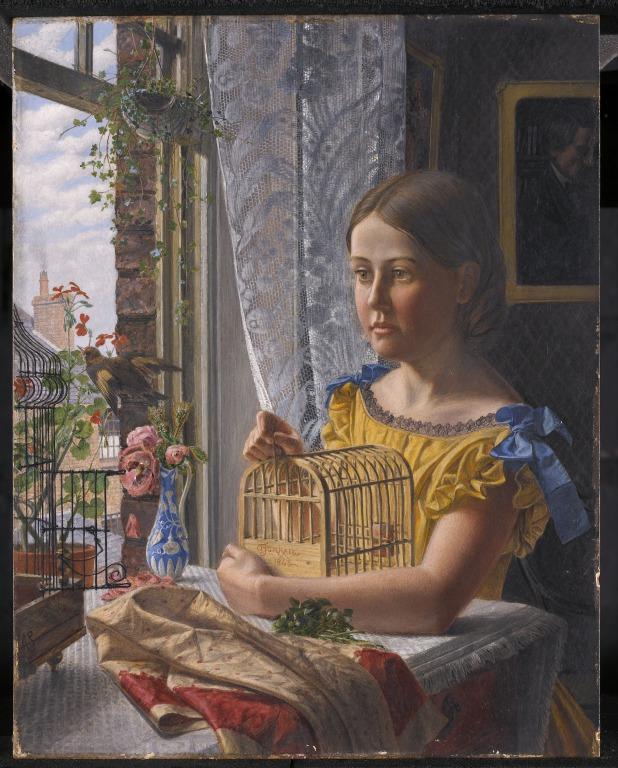


The Escape
_
LIVERPOOL, UK
WALKER ART GALLERY
FIRST FLOOR, ROOM 6
_
The Artist is standing by the small painting Escaped by Joseph Edward Worrall. The Artist has just encouraged the Audience to come closer to study the painting. The Audience is slowly finding their place in the room that is much smaller than the ones before.
THE ARTIST READS
I am flying. The wings that I now finally can spread freely is pushing the air downwards, pressing me up and further out into the outside of this house and cage where I have been kept. But before I leave this scene. Let me tell you about this painting.
When paintings of women have birds like me in cages there seem to be a rule that turns us into symbols of the life and histories of humans. Often, we are said to represent the confined and controlled social lives of young middle class women. But in this painting, I am said to represent grief. The symbolic reading of this painting is telling us that it is not me that escapes, but the life of the portrayed girl who died young. Her suffering has ended, and her spirit is free, and it is me, escaping, that symbolizes this …
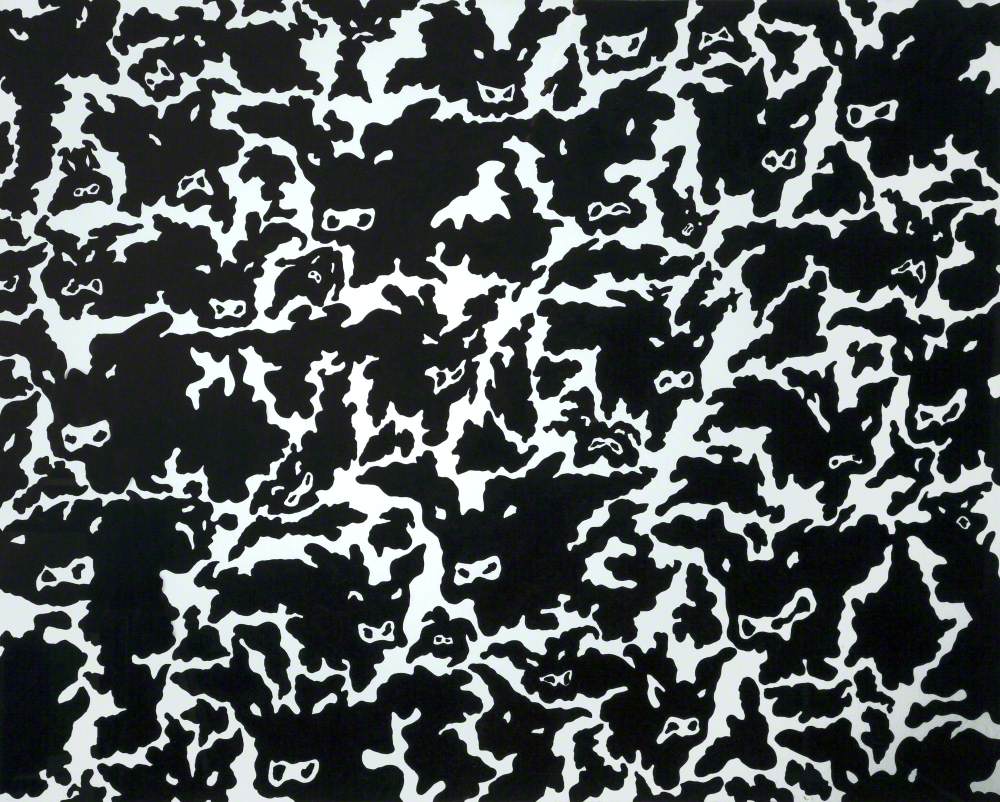
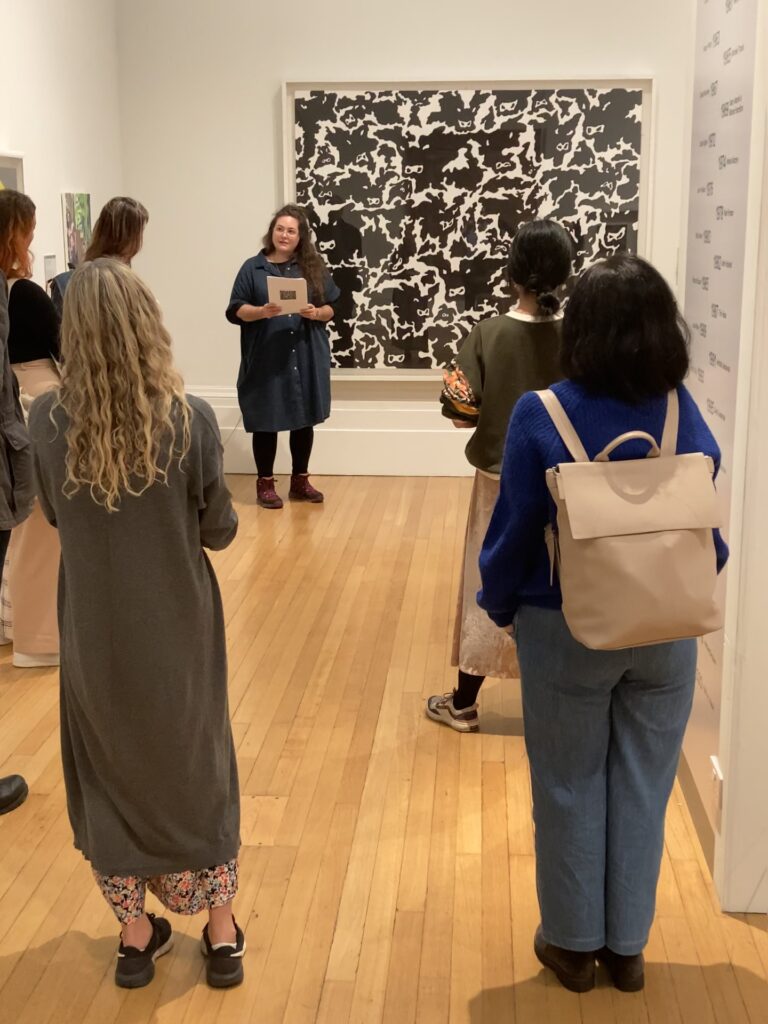
Becoming Invisible while Visible
_
LIVERPOOL, UK
WALKER ART GALLERY
FIRST FLOOR, ROOM 15
_
The Artist is standing in a corner next to the painting Cow Mutations by Tim Head. Around her the Audience try to fit in between the temporary walls of the room.
THE ARTIST READS
All these hands. Painting us, studying us, drawing us. Abstracting our spots into a crowd that floats together, making a pattern. We are individuals that are turned into a crowd and then we disappear into abstraction, become invisible, while visible.
We are here in these museum halls because of the white fluid. Because of the pattern on the carton that so practically carries our bodily fluids. Because the artist that painted this painting was inspired by that which you see every day, a kitchen table, a milk carton that pours that which keep our sisters in shackles. We are the visuals of the system of everyday oppression and by painting us we are made forever visible, while …
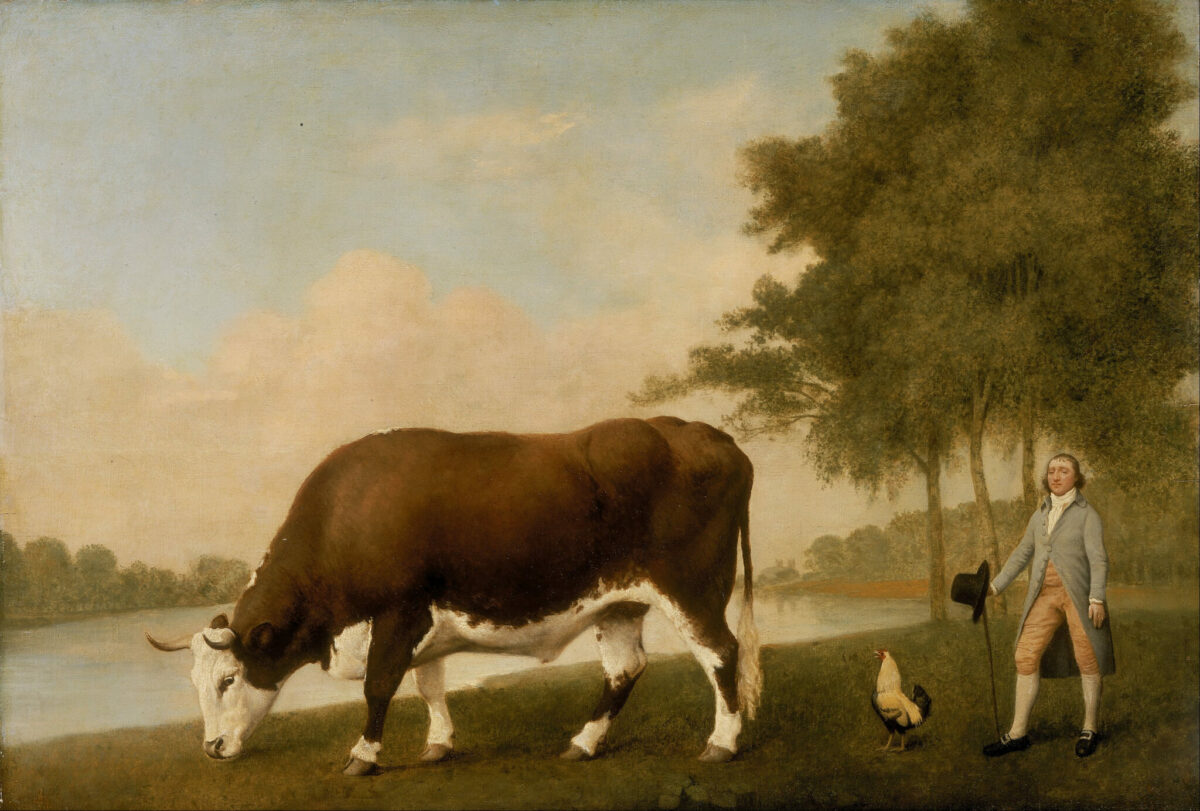
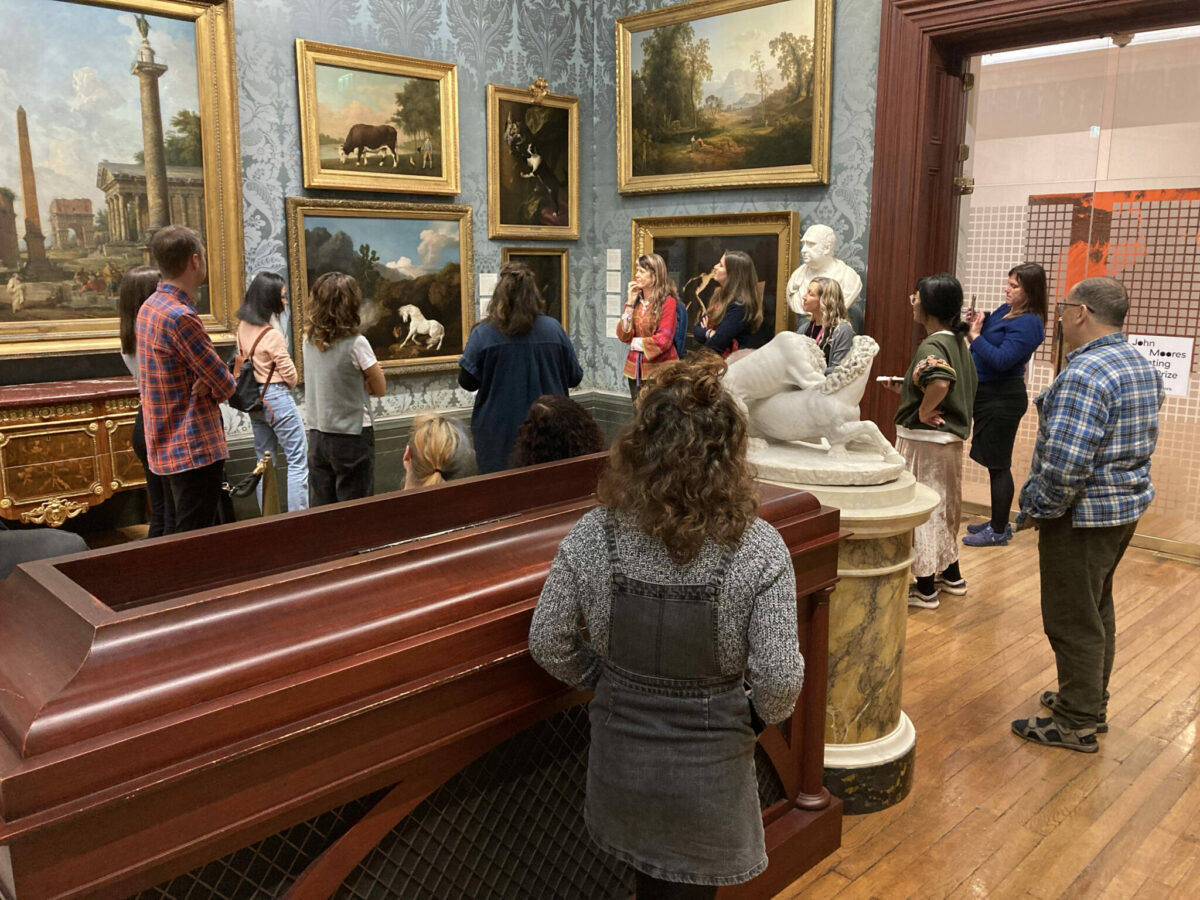
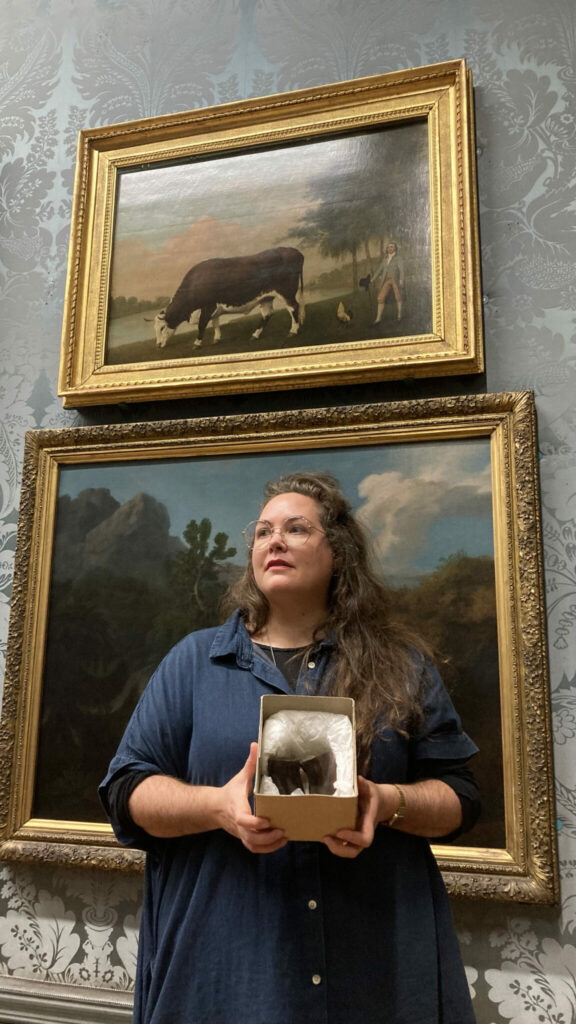
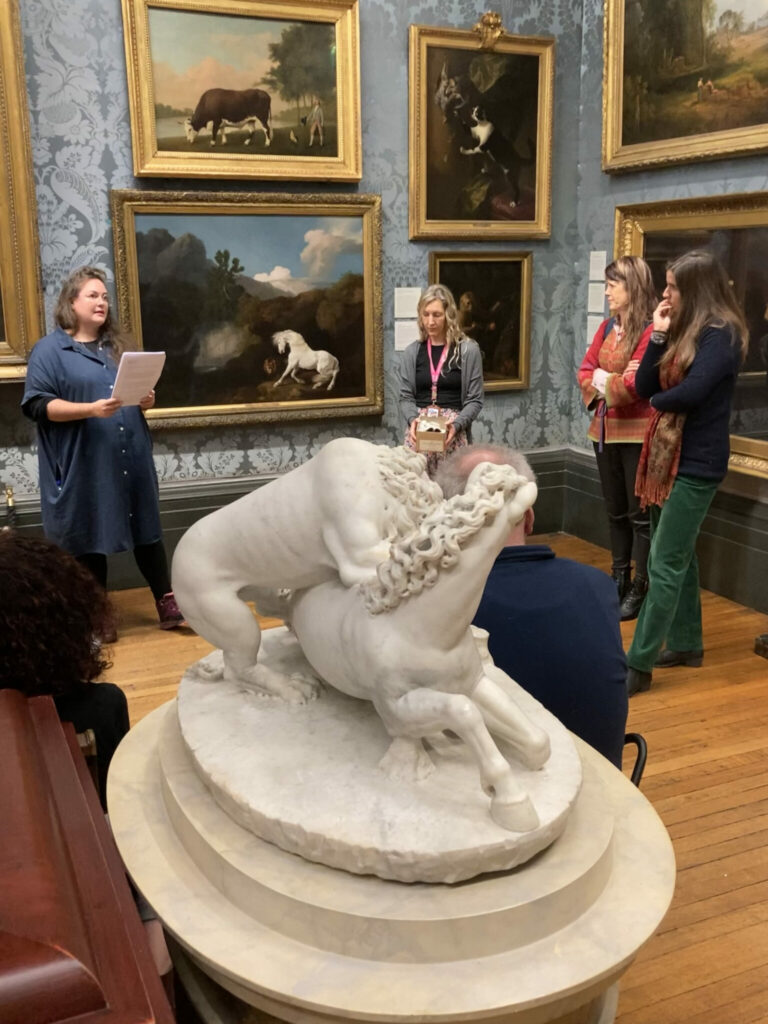
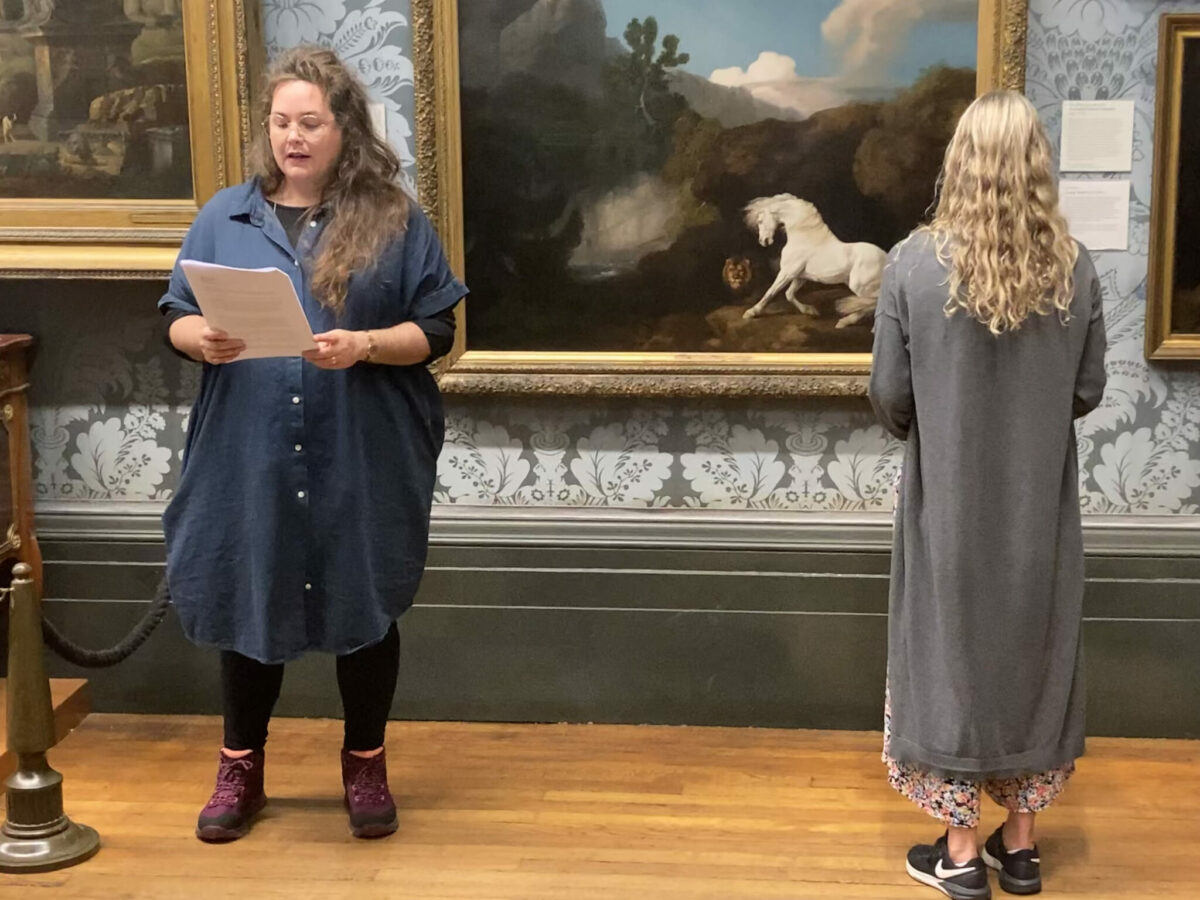
The Ingenuity of Gentle Men
_
LIVERPOOL, UK
WALKER ART GALLERY
FIRST FLOOR, ROOM 5
_
The Artist is standing below the painting The Lincolnshire Ox by Georg Stubbs. The Audience is forming a semi-circle standing, or sitting down on wooden benches, around the painting. Alex Patterson, Assistant Curator at the Walker Art Gallery, is standing among the Audience holding a small archival paper box.
THE ARTIST READS
I am standing on green grass, next to a river. The sun hits my face, and the shadows are shorter than expected this time of day. It is the end of summer, and the color of the leaves are slightly tinted with orange.
Or maybe everything I told you just now is just the consequence of time and conservation?
Yes, I am standing next to a river. Yes, the sun hits my face, and the shadows are short. But it is because of the age of the painting, not the sun, that there is a tint towards orange. The intent of the artist was …
Multispecies Storytelling Workshop
At the Walker Art Gallery for the Animals and Landscapes Symposium
Nov 18 2022
For the workshop the participants were given three assignments: The first was a collective inventory of the non-human animals on display in the rooms 5, 6, 7, 8, and the second a writing exercise that embrace anthropomorphism and imagination as tools to write counter art histories. The third assignment was a short collective reading in the shape of a circle in room 6.
